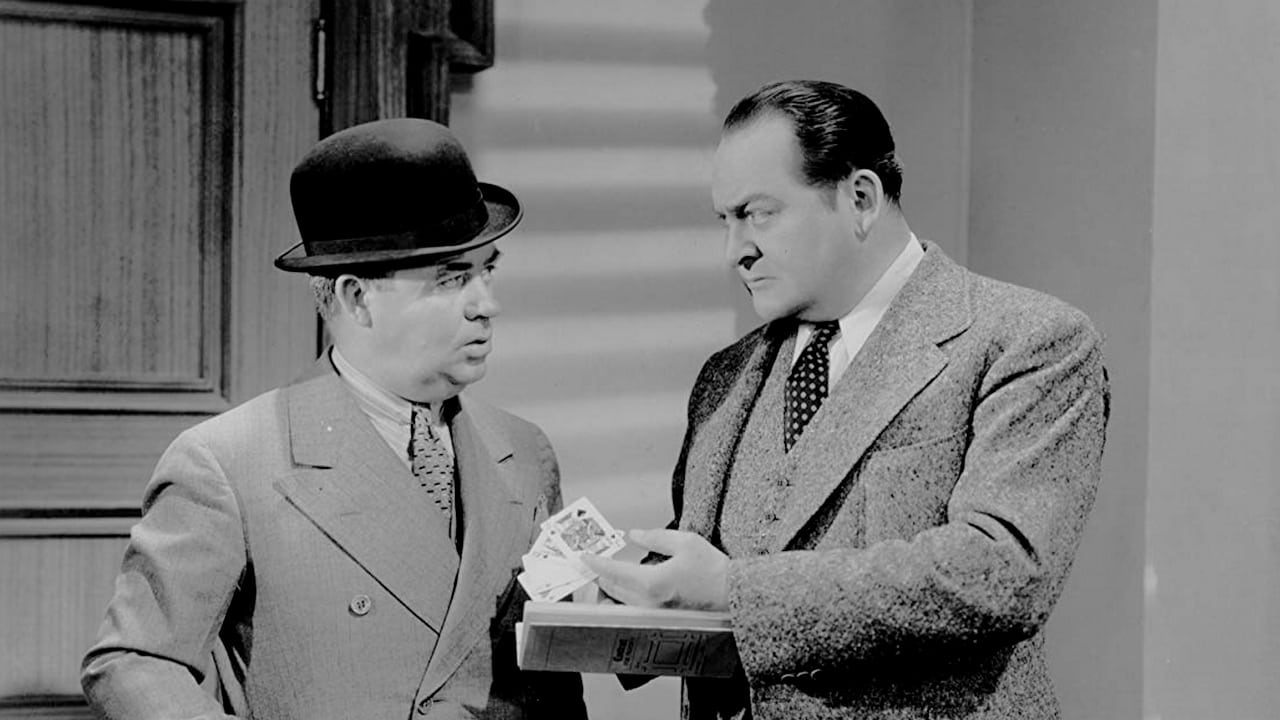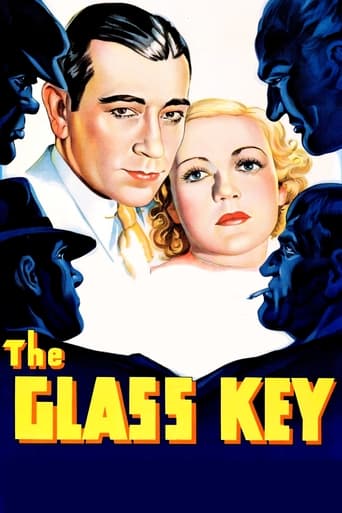

With "The Glass Key" George Raft bounced back in popularity after some of the worst reviews in his career ("The Trumpet Blows", "Limehouse Blues") and I agree with the other reviewers, it is a pretty good movie. It was supposed to be Dashiell Hammett's favourite of the books he had written. The nominal female lead was the delectable Claire Dodd. She could play any role - as long as it was high class - no "dese, dems and dose" for her. She could be the archest "cat" or the perfect secretary when she played Della Street to Warren William's Perry Mason. Unfortunately here she is not playing opposite George Raft, what sparks they could have made. She was in her snooty society girl mode and played Janet Henry, daughter of "above reproach" Senator Henry. She has also turned the head of genial Paul Madvig (Edward Arnold) who is sick of always being called upon to get shady characters out of scrapes - he wants to clean up the town and his act.His right hand man Ed Beaumont (Raft) is also concerned about Madvig's daughter Opal (insipid Rosalind Culli) who is a bit too friendly with Janet's ne'er do well and obviously cad of a brother Taylor (Ray Milland). When Taylor is found murdered "someone" implicates Madvig, who was known to have disliked him and Ed has an uphill battle trying to convince Paul that he is not the "Mr. Popularity" around town that he thinks he is. He even goads Paul into a fight to find out who that "someone" is. It wouldn't be a George Raft movie without some pretty realistic fight scenes including one with an attack dog and another where Ed gets out of a sticky situation by kicking his protagonist in the shins!!! Roughed up by a vicious thug (Guinn "Big Boy" Williams in the role of his career) who is no match for Ed in the "smarts" department. After another playful going over, Ed has to start a fire in the hideout and then crash through a roof to the safety of a family who promply call an ambulance.The "someone" is finally found - he is Schloss, brother in law of a driver involved in a nasty car accident who had gone to Paul for help only to be turned away. You do get a feeling who the murderer is but it is all wrapped up very nicely. Unfortunately Raft's leading lady was not vivid Claire Dodd but boring Rosalind Culli. Culli? Keith? Culli-Keith?? What was her name?? In fact the only reason she is now remembered is for the confusion with her name. As Rosalind Culli she was announced to appear in "The Glass Key", during the filming her name was changed to Culli-Keith but when the movie opened, hey presto she was Rosalind Keith!!!
... View MoreThis 1935 version of The Glass Key is not often seen, the 1942 film with Alan Ladd, Veronica Lake, and Brian Donlevy is far better known. Still this one has some interesting features, notably for the one and only time in his career George Raft played a Dashiell Hammett hero.It is one of the legends of Hollywood that George Raft turned down three of the roles that made Humphrey Bogart a legend, High Sierra, The Maltese Falcon, and Casablanca. The middle one of these was taken from the Dashiell Hammett novel and Ed Beaumont is very much like Sam Spade.They have the same laconic personality, but unlike Spade who is a partner in a detective agency and for hire, George Raft as Beaumont is the personal retainer and fixer for political boss Edward Arnold. And Arnold is heading for some trouble. He's decided to join the 'reform' element in his town headed by Senator Charles Richman and that does not please gangster Robert Gleckler who has had a working relationship with Arnold up to this time. But Arnold who has worked his way up from poverty sees a chance at respectability and the thing that makes him interested is Claire Dodd who is Richman's daughter and who plays along with Arnold's interest in her for her father's sake.At the same time Richman has a wastrel son in Ray Milland who has added Arnold's daughter Rosalind Keith to his list of conquests. He's needing some money real bad to pay off gambling markers to Gleckler. Later on Milland winds up dead and suspicion falls on Arnold. It's up to Raft to investigate and get him out of the jackpot.Three big changes from this version of The Glass Key are readily apparent. First in the 1942 version the daughter of Arnold becomes the sister of Brian Donlevy played there by Bonita Granville. Secondly the character of Emma Dunn is here as Arnold's mother, the mother isn't in the 1942 film. Finally a most unfunny comic relief character in this film played by Tammany Young is dropped altogether from the later film. Otherwise if you know what happened in that film the same occurs here with the same ending.But the leads are the exact same, tightlipped and tough. George Raft and Alan Ladd are just about the same as actors except for hair color. Veronica Lake is a bit more sultry than Claire Dodd, but then again she was more sultry than most of the women ever born on planet earth.I think Donlevy convinced himself in his version that he was really in love with Veronica Lake. Arnold whose character mouths the words was married before and now that he's a widower is looking for that all important trophy wife this time around.It's hard to choose between Guinn Williams and William Bendix who played the sadistic Jeff who was the button man for Gleckler. Williams could be brutal in films if he had to, though most of the time he played amiable lunkheads. There's no element of latent repressed homosexuality in Williams's performance as there is with Bendix however. Although both versions from Paramount of The Glass Key standup well today, it's really a pity that Humphrey Bogart and Lauren Bacall never got to do this story. It would have been perfect for both of them.
... View MoreThis is before noir. There aren't any noir elements in it. But there is something else: the type of tough guy that would become a staple. It seems to have started with Hammett. We already had the loyal man, strong and true and sometimes coming back from a beating. But this guy's a rascal, womanizer and gambler. A tough guy dedicated to someone who by ordinary standards isn't worth it. George Raft is as good in this as Bogart ever was later after the type had been established. The story is pretty interesting too if you make allowances for the bizarre coincidences, the circular personal connections and the trite resolution. What's interesting is the twist. By itself, it is ordinary, but Hammett seems to have known that the twist also has to reinforce the types because the whole thing is about the types.This surely is not the first time a hoodlum is portrayed sympathetically. But it is the first time I know that it is done well and integrated with the structure of the story. There's a particular scene worth noting. Our hero was nearly beaten to death by a big thug. He escapes. This really was brutal.Later, he goes to a bar where he knows this guy is. The thug is drunk. They to an upstairs room by themselves to have some more drinks before the thug plans to finish off Raft. We know this thug has just violently killed a simple man. Raft is supremely cool and of course comes out more than okay. If this were noir, he wouldn't; he wouldn't be in control. But this is an anti-noir where a human can be in control. He is.Ted's Evaluation -- 2 of 3: Has some interesting elements.
... View MoreThis early adaptation of Hammett's novel is not as well known as the Alan Ladd version but is very much worth seeing. Different in some ways, eerily similar in some ways, it's usually a little more raw than the later remake (the car crash that opens the film is still jarring today). And as the other reviewer notes, it has all the classic noir elements. Definitely worth seeking out.
... View More